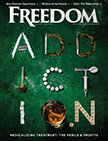In 1965, President Lyndon Johnson launched the federal Head Start early-childhood education initiative. Greatly expanded in the 1980s, it has become one of the longest-running programs addressing systemic poverty in the United States. The Child Development Group of Mississippi (CDGM) was an early Head Start program, established that same year.

Mississippi in 1965 was the most racially violent, fiercely segregated and poorest state in America. The thousands of children and families who participated in CDGM’s Head Start program were black. Most lived in shacks and shanties in a desolate part of the state known as the Delta, covering more than 7,000 square miles. Their level of poverty was extreme—family incomes averaged $400 a year.


CDGM families lacked just about everything except courage and a fervent desire to better their lives. Despite enormous challenges, they organized CDGM Head Start centers throughout the Mississippi Delta, opening their doors to 12,000 children in dozens of counties—in just eight weeks.
Photographer Bob Fletcher—who spent much of the 1960s documenting the Civil Rights Movement in the American South—was there with his camera in that burgeoning time, to capture the establishment of CDGM and its early days in operation.
In February 2015, Fletcher’s photographs were exhibited at the Church of Scientology National Affairs Office in Washington, D.C., to commemorate Black History Month, and he has generously allowed a selection to be published in Freedom, in keeping with the Church’s commitment to promote human rights and celebrate those people who work to extend and preserve them.
Many children in the Mississippi Delta in 1965 were the grandchildren or great-grandchildren of slaves. They lived in wood cabins, without electricity or plumbing. Most families had no transportation, and lacked access to even basic health care. There were no preschools, no day care centers, and no public kindergartens.


CDGM centers were, in some ways, like all early Head Start centers—focused on bringing children together to play, eat nutritious food, and acclimate to a school environment. CDGM was special in that it addressed disempowerment. Its model was based on the notion that, beyond laying an academic foundation, preschool could have a profound impact on a child’s life by offering a structure in which young children could see their parents, with whom they were profoundly identified, become competent and confident—able to provide a happy, broadly enriching educational experience and initiate fundamental, positive change in the communities where they grew up.
So important was a major role for parents that the program relied absolutely on their participation. There would be no CDGM Head Start centers unless parents organized them. Mississippi Delta communities—most clusters of only 10 or 15 families—each had to form a committee to act as a school board, find and fix up a facility, enroll and document eligible children, and recruit staff—all with no guarantee of grant money.


Once a CDGM center was funded, children participated in the program alongside their parents and neighbors—who were also learning. No trained teachers or early childhood development professionals worked in the classroom. Instead, a central staff with expertise in education and administration provided technical assistance to thousands of very-low-income parents, who implemented the preschool program for their own kids—and who could in turn function, within a year’s time, in that same mentor role.
It was a true grassroots movement.
Also at the core of the CDGM model—jobs.
CDGM employed hundreds of poor black adults who, alongside community volunteers, ran the Head Start programs. As a result, young people saw their parents become gainfully employed.


Children weren’t the only ones inspired. Several times when there were gaps between grants, residents of the Delta kept CDGM centers open and operating at full scale without funding—for as long as six months.
CDGM exemplified, perhaps more than any other early Head Start program, the realization of the federal initiative’s core aim: motivating low-income communities to activate volunteers from within, to work on their own behalf.
Just weeks after the first Head Start centers opened in the Delta in 1965, Mississippi’s white power structure launched a full-scale attack on CDGM. In response, the Mississippi Delta community rallied, lobbying support from liberal politicians, prominent early-childhood educators, the northern press and leaders of the Freedom Movement, including Martin Luther King Jr., the National Council of Churches and the AFL-CIO’s Citizens’ Crusade Against Poverty.
They kept their doors open.
CDGM is long remembered, but it would be short-lived. After continued, strong opposition from segregationist politicians and the local press, its federal Head Start funding was cut off in October 1967, after just two years.


But the spirit of CDGM—and its essential form and philosophy—survives to this day in descendant programs, such as the Friends of the Children of Mississippi, that have benefited hundreds of thousands of children.
CDGM is still cited as a model for community activists and organizers working to reach, inspire and positively impact lives.
The Child Development Group of Mississippi was an exercise in traditional democratic values—human rights, health care, education, opportunity, jobs and fair wages for everyone. Its greatest lesson, that impoverished and disempowered communities, with allies, can empower themselves.
Photographer Bob Fletcher, as much activist as chronicler, was a CDGM volunteer developing visual media used to educate and train Mississippi Delta parents who staffed the CDGM Head Start centers.
Fletcher (below in 2015) now lives in Clearwater, Florida, where he continues to take pictures and volunteer in the local community.
































